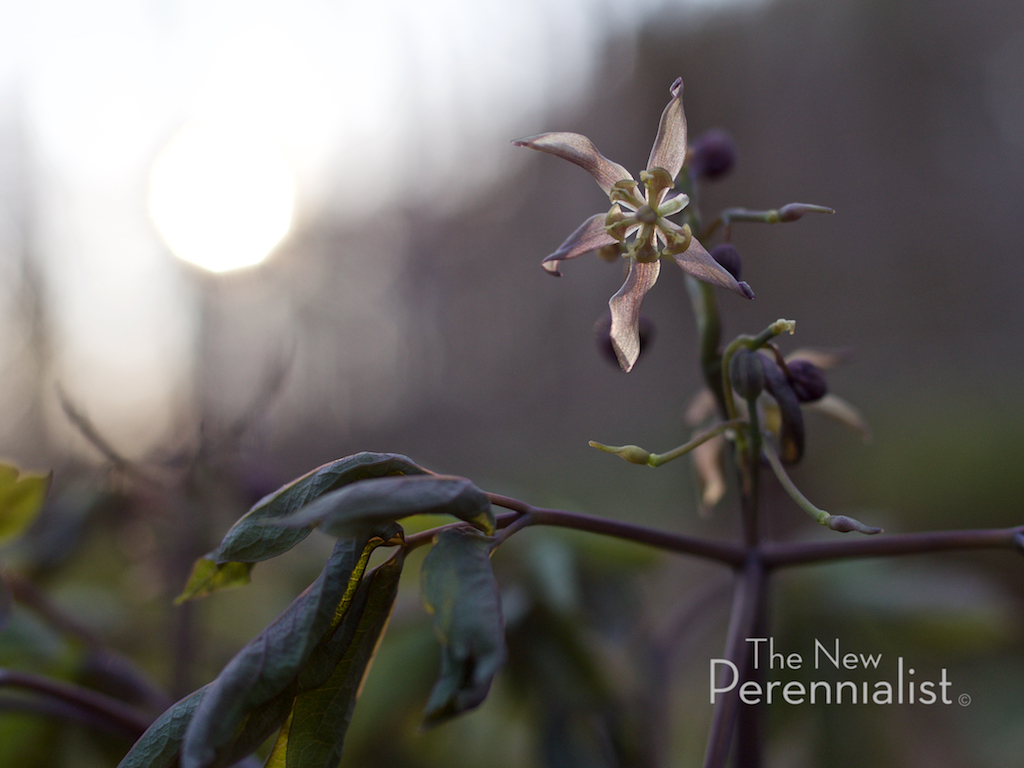Out of nowhere, the ice storm hit. Freezing rain for two days straight in late March that encased entire forests in an icy prison of frozen glass, well over an inch thick.
Legions of ice-laden trees were toppled, crushed, and tossed about like the toys of an impudent child – leaving a scene of devastation as deathly as it was beautiful.

Nearly 100,000 people lost power, many for days – ourselves included. The vastness and sweep of the storm’s destruction was dizzying.
Mother nature can be a cruel mistress.

Second Coming
How strange then to hike into the forest a few weeks later and look beneath the battlefield of shattered branches and limbs to find the forest floor surging back to life.

Spring ephemerals are survivalists by design. A whole class of woodland perennials who act out their lives in the brief window of sunlight before the forest canopy leafs over.

For the past month and more, I’ve wandered out alone in the woods, sidestepping the trails blocked with fallen trees, getting right down on hands and knees with my lens to observe the microverse of the forest floor.

Here’s a glimpse of what I found in this otherworld of spring. Click the images for plant names.













The latter two shots show ephemeral cultivars transposed to a northern garden at Lilactree Farm in Mulmur. The double Sanguinaria ‘Multiplex’ and Jeffersonia dubia from Asia are things of wonder indeed.

To read more about the role of ephemerals and how they can grow to illuminate the naturalistic garden, flip back to a more extensive post on the topic here.
—
Next time: More on my masterclass with Piet and Roy in planting design.

Your forest is so different from our PNW forest. We can rarely see the forest floor due to shrubby evergreen growth of sword ferns, salal, and semi-evergreen brambles. Your spring ephemerals are lovely and I find myself quite envious of your open woodland.
Interesting contrast. It is quite magical at this point in the year.
Absolutely beautiful! I love the swamp area with the Caltha and red Cornus?
A great scenery.
Thanks Bettina @Hermannshof! Yes it’s Caltha palustris and Cornus sericea – happily coexisting in our 23-acres of protected wetland. I can only take the picture, not the design credit – that’s nature at work.
Having fallen behind in my blog reading, I’ve only now read this post. Tony, what a wonderful reminder of a special period of the year. Gorgeous photos. I’ve resisted looking for Jeffersonia dubia, preferring J. diphylla for its historic connections to Jefferson and Virginia where I grew up. But seeing your photos from Brian’s garden, I have added it to my list of plants to look for. Sourcing some of these ephemerals (and many other interesting plants as well) isn’t easy so if you have suggestions, do let me know.
Much thanks Pat… Yes, the Jeffersonia dubia is most seductive vs. the native version – likewise with the Sanguinaria ‘Multiplex’.
I source ephemerals from a combination of native nurseries and more esoteric specialty nurseries like ‘Lost Horizons’ in Acton. Also take a look at Fraser Thimble Farms in B.C. for rare jewels like Erythroniums, Japanese hepaticas etc. which command a very steep price for the cultivars. You can obtain them via mail order.